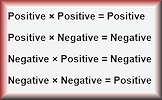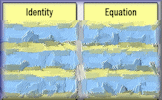Here are some specific activities, investigations or visual aids we have picked out. Click anywhere in the grey area to access the resource.
 Mix and Math Determine the nature of adding, subtracting and multiplying numbers with specific properties.
Mix and Math Determine the nature of adding, subtracting and multiplying numbers with specific properties. Identity, Equation or Formula? Arrange the given statements in groups to show whether they are identities, equations or formulae.
Identity, Equation or Formula? Arrange the given statements in groups to show whether they are identities, equations or formulae. Satisfaction This is quite a challenging number grouping puzzle requiring a knowledge of prime, square and triangular numbers.
Satisfaction This is quite a challenging number grouping puzzle requiring a knowledge of prime, square and triangular numbers.
Here are some exam-style questions on this statement:
- "Use algebra to prove that \(0.3\dot1\dot8 \times 0.\dot8\) is equal to \( \frac{28}{99} \)." ... more
- "m and n are positive whole numbers with m > n" ... more
- "Express as a single fraction and simplify your answer." ... more
- "(a) Prove that the product of two consecutive whole numbers is always even." ... more
- "The number \(T\) can be expressed as \(T = 4k + 3\) where \(k\) is a positive integer." ... more
- "Consider two consecutive positive even numbers, \(2n\) and \(2n + 2\)." ... more
Here is an Advanced Starter on this statement:
Click on a topic below for suggested lesson Starters, resources and activities from Transum.
Furthermore
This video on Deduction is from Revision Village and is aimed at students taking the IB AA Maths Standard level course
Example, Show that the algebraic generalisation of the following is true.
$$ \frac{1}{m+1} + \frac{1}{m^2+m} \equiv \frac{1}{m} $$Let's start by finding a common denominator for the left-hand side of the equation:
$$ \frac{1}{m+1} + \frac{1}{m(m+1)} $$ $$ \frac{m + 1}{m(m+1)} $$Now, let's simplify the expression:
$$ \frac{1}{m} $$It is now evident that the original equation:
$$ \frac{1}{m+1} + \frac{1}{m^2+m} \equiv \frac{1}{m} $$Is generally true, as the left-hand side simplifies to \( \frac{1}{m} \).
Thus, the algebraic generalisation provided does hold true for all values of \( m \).
How do you teach this topic? Do you have any tips or suggestions for other teachers? It is always useful to receive feedback and helps make these free resources even more useful for Maths teachers anywhere in the world. Click here to enter your comments.

